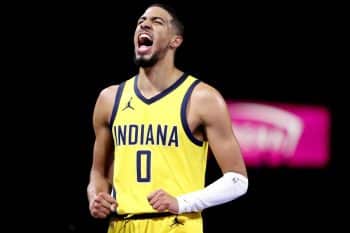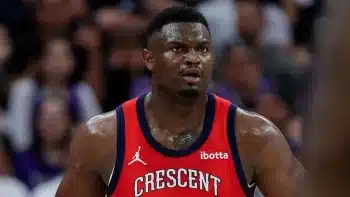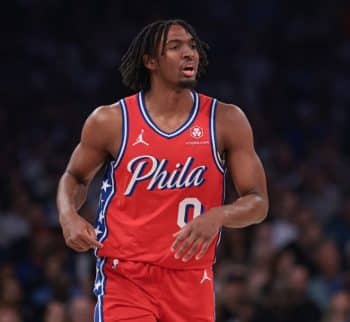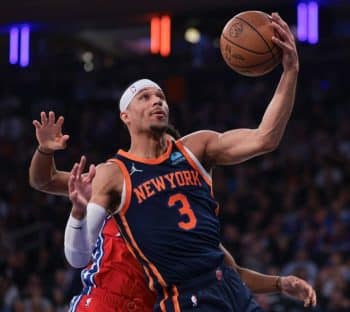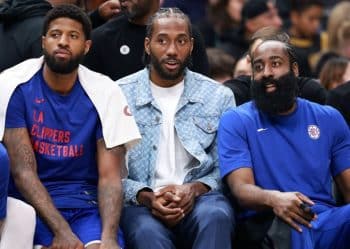NBA
NBA AM: Big Shifts Out East

The number of All-Star caliber players bolting the Eastern Conference for the Western Conference this summer has been striking, widening a gap between the NBA’s two halves that, frankly, was already fairly large this past season.
In the last two weeks, Eastern Conference stars like Jimmy Butler, Paul George and Paul Millsap all left what were playoff teams in the Eastern Conference a year ago for teams that either weren’t in the Western Conference playoff picture last season or were eliminated in the first round.
This mean a few things. For starters, Golden State, San Antonio and Houston—the top three seeds in the Western Conference last year—will now be given more competition than ever thanks to the aforementioned moves that brought George to Oklahoma City, Millsap to Denver and Butler to Minnesota. While the L.A. Clippers took a hit in losing Chris Paul, the Memphis Grizzlies, Portland Trail Blazers and New Orleans Pelicans aren’t going away. If Utah holds onto Gordon Hayward, they could be a 50-win team out West, too.
In short, that conference is more loaded now than ever. Sacramento and Phoenix are the only teams in full rebuild mode at the moment, with Dallas clutching to the remnants of Dirk Nowitzki’s career and the L.A. Lakers starting to turn the corner. It’s an incredibly competitive conference.
The East? Not so much.
Cleveland, Boston, Toronto and Washington look almost certain to keep their top-four status in the conference simply by bringing back the same players they had a year ago. Add Milwaukee to that conversation, too, particularly with MVP-caliber play coming soon from the likes of one certain Greek Freak. But after that, things get really ugly.
Chicago, Indiana and Atlanta all made the playoffs last year but each will vie for the conference’s worst record next season after losing their stars, either through via lopsided trade or free agency. Kent Bazemore, for example, could very well be the best player on that Hawks roster next season. Yeah, it’s ugly.
Detroit hasn’t made any structural changes to a team that was eight games under .500 last year, Orlando never has been more awful, and the Charlotte Hornets can’t honestly think Dwight Howard jumps them a tier in this conference.
What these changes do represent to some teams is an opportunity to make a leap next season. Philadelphia, for example, can have real conversations about pursuing a playoff spot, especially after adding J.J. Redick and Amir Johnson. The Miami HEAT, who missed the playoffs a year ago because a tiebreaker, could conceivably find their way there next season, especially if they manage to wrangle Gordon Hayward away from Utah.
There’s opportunity to help move a burgeoning team to the next level of its development, which doesn’t get anybody any closer to winning a championship since the Golden State Warriors are “a thing,” but making those types of baby steps in the interim is a necessary step for young, talented teams to taste the playoffs and slowly creep toward greatness.
Beyond the opportunity of actually making the playoffs, it also presents opportunities for young players to make their first All-Star Games. Losing this many stars only means more open spots for All-Star Weekend.
Could Dion Waiters be an All-Star in the Eastern Conference as presently constructed? Will it finally be Bradley Beal’s year? What about Joel Embiid? The snub list out East will be nowhere near as controversial as the one we’re bound to debate endlessly for the Western Conference. For the remaining free agents considering potential suitors, the East has to look pretty desirable at the moment in terms of building a brand, making the playoffs, and competing for a shot at an All-Star Team.
If it doesn’t happen this summer, it probably will next summer. This thing will even out once the grind gets too tough in the Western Conference, but in the meantime, this again raises a real question about how playoff seeding should work. The way these conferences are stacked at the moment, it’s more than possible we could see a 44-38 team miss the playoffs out West and a 37-45 Eastern Conference team get in. Just letting in the teams with the 16 best records, seeded based on those records, would be an incredibly easy decision to make.
It’s not like travel is the issue it used to be when conferences originally were invented. These guys fly charter jets now. The quality of the playoffs is more important than any concerns about travel, especially when we look at a salary cap that came in $2 million below projections because last postseason was too lopsided to get the seven-game series that pull in the big bank.
While that conversation probably won’t happen, there really will be big postseason and All-Star possibilities for new players and organizations out East next season. The more loaded the West gets, the more teams like Washington and Boston look better without even having done anything of note this summer.
